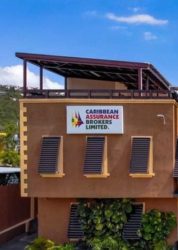The Board of Directors of National Commercial Bank (NCB) announced a 39 percent hike in the latest dividend that has been declared. The banking group will be paying the interim dividend of 32 cents per ordinary stock unit on February 20, 2014 to stockholders on record as at February 7, 2014. Last year, NCB’s first dividend for the year was 23 cents that was paid in March and on May 24, 16 cents per share.
NCB also reported earnings for the first quarter to December indicating that operations are back to normal coming out of 2013 when profits were negatively impacted by the government debt swap. Profit after tax came out at $2.856 billion versus profits of $2.786 billion and for the September 2013 and $1.778 billion after writing off some large one-time expenses. Earnings per share amounted to $1.16 and should reached around $5 for the year, barring any major negative developments.
 Total revenues climbed by 15 percent to $13.75 billion compared to $11.967 billion.
Total revenues climbed by 15 percent to $13.75 billion compared to $11.967 billion.
While net revenues grew from $9.16 billion to $10.47 billion, expenses grew from $5.78 billion to $7.34 billion resulting in reduced operating profit of $300 million. A $301 million gain from on acquisition of a subsidiary counter balanced the reduced operating profit. Bad loan provision was down from $563 million to $390 million, but policy holders cost climbed by a billion dollars with the acquisition of Advantage General Insurance Company.
Looking forward, loans grew 27 percent or $31.8 billion to $148 billion from December 2012 and deposits were up 10 percent to $194 billion.
Related posts | NCB ill-fated IPO cost $680m | NCB cuts dividend 75% | NCB recovers from NDX hit














